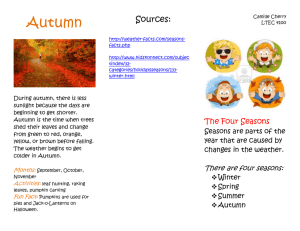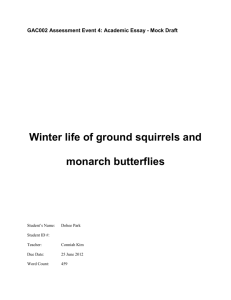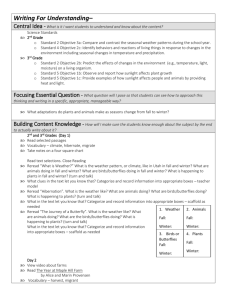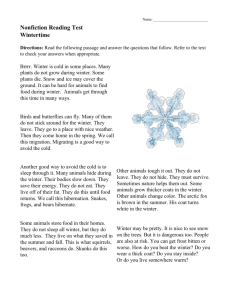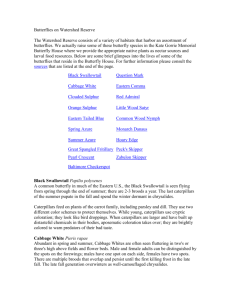Seasons Passages
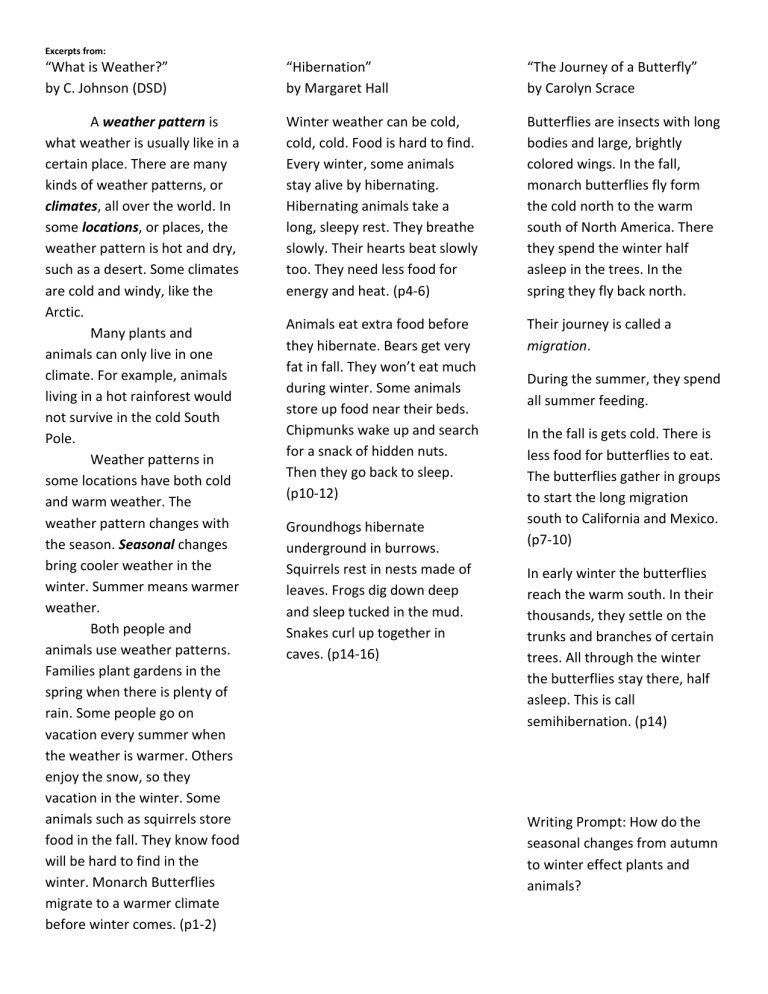
Excerpts from:
“What is Weather?” by C. Johnson (DSD)
A weather pattern is what weather is usually like in a certain place. There are many kinds of weather patterns, or
climates, all over the world. In some locations, or places, the weather pattern is hot and dry, such as a desert. Some climates are cold and windy, like the
Arctic.
Many plants and animals can only live in one climate. For example, animals living in a hot rainforest would not survive in the cold South
Pole.
Weather patterns in some locations have both cold and warm weather. The weather pattern changes with the season. Seasonal changes bring cooler weather in the winter. Summer means warmer weather.
Both people and animals use weather patterns.
Families plant gardens in the spring when there is plenty of rain. Some people go on vacation every summer when the weather is warmer. Others enjoy the snow, so they vacation in the winter. Some animals such as squirrels store food in the fall. They know food will be hard to find in the winter. Monarch Butterflies migrate to a warmer climate before winter comes. (p1-2)
“Hibernation” by Margaret Hall
Winter weather can be cold, cold, cold. Food is hard to find.
Every winter, some animals stay alive by hibernating.
Hibernating animals take a long, sleepy rest. They breathe slowly. Their hearts beat slowly too. They need less food for energy and heat. (p4-6)
Animals eat extra food before they hibernate. Bears get very fat in fall. They won’t eat much during winter. Some animals store up food near their beds.
Chipmunks wake up and search for a snack of hidden nuts.
Then they go back to sleep.
(p10-12)
Groundhogs hibernate underground in burrows.
Squirrels rest in nests made of leaves. Frogs dig down deep and sleep tucked in the mud.
Snakes curl up together in caves. (p14-16)
“The Journey of a Butterfly” by Carolyn Scrace
Butterflies are insects with long bodies and large, brightly colored wings. In the fall, monarch butterflies fly form the cold north to the warm south of North America. There they spend the winter half asleep in the trees. In the spring they fly back north.
Their journey is called a
migration.
During the summer, they spend all summer feeding.
In the fall is gets cold. There is less food for butterflies to eat.
The butterflies gather in groups to start the long migration south to California and Mexico.
(p7-10)
In early winter the butterflies reach the warm south. In their thousands, they settle on the trunks and branches of certain trees. All through the winter the butterflies stay there, half asleep. This is call semihibernation. (p14)
Writing Prompt: How do the seasonal changes from autumn to winter effect plants and animals?




